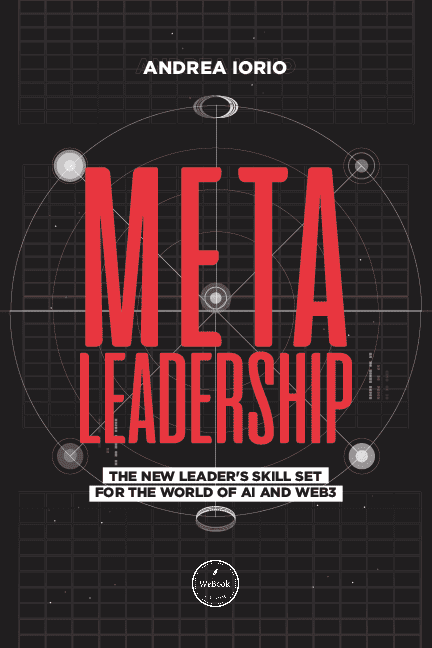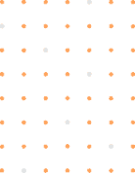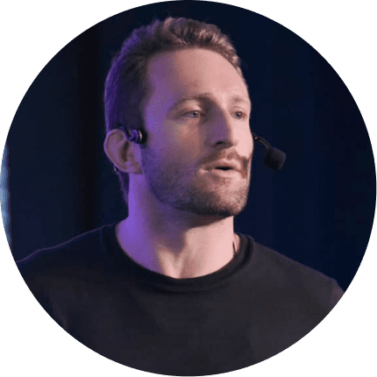Let's say you are a small hairdresser in a small town who wants to grow her business digitally. You use social networks, but in reality you don't really know much about Digital Transformation
I want you to reflect: what are the main questions you are going to ask yourself in this situation?
Well, I know that first thing you might be thinking "How much money do I have available?", and it's correct, but obviously it's not just that.
Think deeply.
Well, the main questions you will ask yourself are:
· What technologies? In other words, what technologies do I need to adopt to digitally transform my business?
· With whom? That is, do I do everything myself or do I seek outside help?
· How to measure success? What metrics do I have to monitor that define the success of my transformation?
· How to monetize? That is, how does my current business model change or how do I open new fronts and new business models that allow me to generate more value for my client?
· What processes? How do I change or adjust my current processes, or launch new processes, to make order in this new scenario where I do a lot of new things?
· And finally, what skills? In other words, what new skills and competencies do I need to develop to navigate this digital world? and not only mine, but those of my team as well?

These are the fundamental questions that we ask ourselves, and the interesting thing is that this applies to hairdressers but also to industries like media, pharmaceuticals, finance, and so on - that is, the questions are universal, but the answers depend a lot on the market. , and on its moment.
While for the hairdresser who does not have a digital presence, the answer to some of these questions may be to professionalize their instagram through a local advertising agency, in the case of companies that are already advanced in the digital transformation process, the question is exactly the same, but the only difference is that it will involve Web3. And that's all we're going to explore in this article.
When I left Tinder to take over as the digital director of L'Oréal's Professional Products Division, I confess that I was a little lost: I understood digital business, but I lacked the basic framework to be able to start a digital transformation process. In other words, I was already working with a digital native app, Tinder, but I didn't know what would the first steps be to undertake in a company that wasn't digital native...and that's when I started my studies, and between my studies and readings, I I came across the book Driving Digital Strategy, by Harvard professor Sunil Gupta, and it totally changed my way of thinking about digital transformation processes in traditional companies.
Fundamentally, he presents a framework for transformations that divides digital transformations into 4 broad categories, or blocks: what he calls Reimagine Your Business (scope, ecosystem and business model); Reevaluate Value Chain (R&D, operations, distribution); Reconnect with Customers (journey, engaging and managing); and Reimagine Organizations (structure, capabilities and learning).
I used this framework at L'Oréal, and it helped me a lot, as well as many other organizations I've worked with on digital transformation projects, but when I was thinking about what would be the step by step to implement a Web3 transformation strategy, which goes beyond Digital, I realized that I needed to clarify the pillars. Therefore, I developed a Framework that represents for me the necessary step by step to design an assertive Web3 strategy.
To start off, I ask you: if you were a doctor, would you prescribe the same medicine to all your clients? Obviously not, you would prescribe different remedies for each one, based on their symptoms.
Did you realize that it doesn't make sense to start a Web3 strategy without a diagnosis?
So the first step is DIAGNOSIS, and how does it work? You can't do everything, right? So you need to prioritize, and to understand what to prioritize, what are we going to do? We are going to take the framework that we worked on in episode 3, that is, the one on the Areas of Impact of Web3, and fundamentally analyze what are the opportunities that we have available.
I know you will say to me "But Andrea, normally a diagnosis is to look at what is already being done and evaluate", but since with Web3 in 99% of the cases it is still not being done much, I am considering the phase of Diagnosis as a prioritization of opportunities among the main ones we have for our business. For example, for a farm, the most interesting pilot might be doing clinical trials in Metaverse, for a real estate company it might be to tokenize its properties, for a bank it might be implementing blockchain and so on. It can depend a lot on a case by case basis.
From there, the second step is TECHNOLOGIES, that is, what are the Web3 technologies and concepts that we need to use in order to be able to solve these problems and take advantage of opportunities. Do we want to focus on clinical trials? Let's explore the Metaverse further. Shall we tokenize properties? Let's explore blockchain better, and so on.
In this aspect, we have to go deeper into each of the main concepts and technologies of Web3, to identify where the opportunity lies:
Blockchain: Here the first thing we have to understand is that there are 4 Blockchain formats: Public, Private, Federated (or Consortium), and Hybrid. This reminds me a little of the differences in the Cloud Computing part, and fundamentally each one has the characteristics below.
What is each one better for? Well, public is the one typically used for cryptocurrencies and document validation; the private is the one normally used for supply chain and verification of ownership of goods; hybrida can be used extensively for medical records and real estate, and Consortium can be used for banking, supply chain, and research and development. Based on your demand, you must decide where you want to be.
At the same time, the question is: with whom? That is, are you going to develop a blockchain by yourself, if you are a single company? Obviously not, and that's why the concept of Blockchain as a service is emerging more and more, where just like with cloud computing, you can "hire" blockchain via the cloud to create dApps faster; top providers are IBM Blockchain, Microsoft Azure Blockchain, Amazon Managed Blockchain, and more.
From the choice of blockchain, you can also tokenize goods and implement "smart contracts" models: ex. tokenizing a property, or a patent.
Metaverse: here too, as you seek to be in the Metaverse, you will want to better understand the main types of Metaverse, and you can distinguish them into 4 categories based on whether they use Blockchain or not, and whether they are centralized or decentralized, according to the following image:
This makes us understand where we can potentially be and buy land, or have a presence, but at the same time we have to understand what are the technologies that allow us to migrate all our content as 2D companies (videos, photos, texts, etc) to 3D, and here the main platform we should consider is Nvidia's Omniverse: a complete simulation and collaboration platform that profoundly transforms complex design workflows. It is particularly focused on creating Digital twins, which are key to the industrial Metaverse. As far as the gaming and socializing metaverse is concerned, perhaps one of the most important companies is Ready Player Me, a startup through which we can create custom avatars.
NFTs: Obviously NFTs are among the most popular tokens recently due to the NFT fever, but let's understand if you are a company that wants to mint NFTs, what is the best step by step? Well, the main platforms where you can mint NFTs are OpenSea, Rarible and Binance NFTs. The step by step is as follows: choose the digital item you want to transform into NFT; choose which blockchain you want to use; have crypto in your digital wallet and connect it to the platform; choose your NFTs marketplace; upload your file; and sell your NFT!
Now, one of the interesting things with NFTs is that as you create incentives and rewards for NFT owners, you get to create communities;

DAOs: Speaking of communities, we also have to explore DAOs, and how they can be formed. In general, it is not super simple to create a DAO because you have to code the "smart contracts" directly in the blockchain (knowing then native programming), but there are some projects that allow this to be simpler, such as Aragon and DAO Stack How they work In particular, Aragon is a dApp that allows faster creation of a DAO, and even though it is simpler, it is still complex to deal with here and that's why I recommend looking at the step by step on the Aragon.One website .
Now let's move on to the third step, which we can call KPIs, that is: what do we consider to be the success metrics of our migration to Web3? What data should you monitor? And maybe as a last question, what business models should I use?
Let's go by part, starting with the choice of metrics: think about the case where we create a digital twin of our stores, if we are a retailer, and we can metrify everything: from the time a customer spends in front of that new package on the shelf , to the speed at which an item falls off the shelf, to the suspicious movements of a malicious person who has come in to steal…do you realize that this is too much? The big challenge here will be to understand what metrics to monitor - and see that the same applies to blockchain (which will give us a lot of data), and so on.
For example, if I create a DAO that manages a stablecoin, for example, what are some of the metrics I want to monitor? Well, for example you will want to monitor: unique number of token holders; number of integrations (ie how much is it integrated into wallets, exchanges, and other products); TVL is also important, ie Total Value Locked, and so on.
Important to metrify everything in the world of Web3, and prioritize control metrics!
And a question that doesn't want to be silent here, however, is: how do I make money from all this? What are the new business models we need on Web3?
Here, a small retrospective is interesting: each Internet interaction ended up generating new business models (in the case of Web1, eCommerce emerged, software licensing models and so on; in the case of Web2, it is already the case of the sharing economy as Uber and Airbnb, which we can also define as platform models; subscription models; Saas; marketplaces and the like).
In the case of Web3, new business models are emerging:
· one is to launch a native token, i.e. an ICO.
· another is the tokenization of physical assets (as in the case of a property, shares, commodities, invoices or real estate) that are valued based on the underlying asset with a potential premium for unlimited divisibility and liquidity.
· Obviously the Direct-to-consumer, or D2C, which is a model that emerged in Web2, will continue to grow because in Web3 disintermediation is increasing.
· another super interesting model is that of communities: let's assume you're a gamer, there's probably no way you can financially benefit from your hours of play. But what if, thanks to NFTs, you could monetize your efforts? This can be through the sale of accessories you've purchased, earned, or collected in the game's metaverse. This model is currently used in DAOs and can be applied not only to games, but to all types of communities.
· This list is obviously not exhaustive, but it gives us the idea that we can monetize in completely different ways than in the past, and that has huge benefits for businesses in the Web3 world.
Now we come to our fourth point, namely PROCESSES. Regarding processes, we can divide them into Internal and External, and I took this freedom so that we can, on the one hand, understand what are the processes we need internally to accelerate the adoption of Web3 technologies, as well as the processes we need for a Go to external market.
Let's go in parts, starting with the Internals:
We learned with digital transformation, that just having an Innovation team, or a digital area, and not having other people engaged, will not have an impact. Therefore, it is necessary to engage everyone, and innovate with short experimentation cycles. Let me explain: it's critical that people across the organization adapt to the changes of new technology and the productivity changes that come with it. In today's business landscape, you figure out how to do something by doing it over and over again.
In the new agile model, companies focus on how they do things and do many things at the same time to follow, innovate and drive changes in the organization (but always changing one variable at a time, because otherwise you won't know what impacted the what). Internal processes at Web3 for me is fundamentally working like scientists, testing and prototyping frequently, measuring the feedback of these experiments (and scaling what works from them, and leaving aside what doesn't), which even makes us understand that we we will make more mistakes - but this is not necessarily a bad thing, on the contrary: Web3 technologies allow us to maximize learning from experiments, and minimize the cost of errors, following the graph below:
Now, when it comes to the external Go-to-Market processes, we have to understand the power of tokenization and how it created a very important funnel: The concept of the customer acquisition funnel is fundamental to the go-to-market and is very familiar to most businesses: from awareness and lead generation at the top of the funnel to customer conversion and retention at the bottom of the funnel.
The traditional web2 go-to-market therefore tackles the cold start problem through this very linear lens of customer acquisition, covering areas such as pricing, marketing, partnerships, sales channel mapping, and sales force optimization. Success metrics include time to close a lead, website click-through rate, and revenue per customer, among others.
And in web3? Web3 changes the whole approach to starting new networks, as tokens offer an alternative to the traditional approach to starting a customer relationship. Instead of spending funds on traditional marketing to attract and acquire potential customers, top developer teams can use tokens to attract early adopters, who can be rewarded for their early contributions when network effects are not yet obvious or kicked in. . Not only are early adopters that bring more people onto the network (who would like to be similarly rewarded for their contributions), but this essentially makes early adopters on web3 more powerful than traditional web2 business development.
To summarize: on web2, the main stakeholder of the GTM is the customer, usually acquired through sales and marketing efforts. On web3, an organization's GTM stakeholders include not only its customers/users, but also its developers, investors, and partners. Many web3 companies therefore consider the community building functions more critical than the sales and marketing functions… see the difference?
In particular, we can categorize the Go to Markets into 4 quadrants, somewhat as follows:
Just to be more specific, I'll bring two practical examples of GTM on Web3:
Airdrops:
An airdrop is when a project distributes tokens to users to reward certain behavior that the project wants to encourage, including testing the network or protocol. They can be distributed to all existing addresses on a given blockchain network or targeted (such as to specific key influencers); they are often used to solve the cold start problem — to kickstart early adoption, reward or incentivize early adopters, and more.
Developer grants:
Developer grants are grants made from the treasury of a protocol to individuals or teams that are contributing in some way to improving the protocol. This can serve as an effective GTM mechanism for DAOs, as developer activity is an integral part of a protocol's success. Examples of projects and protocols with developer grants include Celo, Chainlink, Compound, Ethereum and Uniswap.
Keywords Digital Transformation: web3 framework Loreal, Tinder, Microdoft, IBM, Meta, Sandbox, Roblox, GTA, Minecraft, Inevitable, GTM, Metaverse, Web 3, Web 3.0, Web 101, Bitcoin, BTC, Cryptocurrency, NFTS, 5G, Digital Twins, DAOS, Blockchain, Big Data, ReD, AI, AR, RPA, BASF, CX, B2B, Open Innovation, Andrea Iorio, Leadership, Web 3, Business, What is Digital Transformation, Business Transformation, Defining Digital Transformation, Digital Transformation Company, Digital Transformation Strategy, Technology Transformation, What Does Digital Transformation Mean, R&D, Finance, 5G, IOT









